Sindh may have suffered a setback, but it has immense potential
Panel at KLF discusses strategies and plan to take province forward
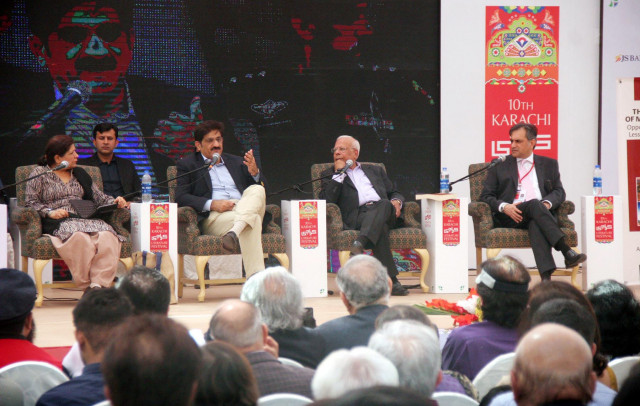
PHOTO: ONLINE
He was addressing a session on the launch of his book 'The Economy of Modern Sindh' at the Karachi Literature Festival on Sunday. In his book, Husain mentions that Sindh's per capita income at the time of independence was nearly 55% higher than the rest of the country, but by 2014-15, this reduced to 17%.
In the period between FY2011-15, the per capita real GDP grew at only 1.2% on average compared with Punjab's 2.6% and Khyber-Pakhtunkhwa's 3.3%. The province lost more at every downturn, which was reflected in a broad-based decline in its share in the national GDP.
Administrative overlaps, poor planning ail Karachi
Despite this, Husain commented, "I am personally very optimistic about the economic potential of Sindh. The differential between Sindh, which was ahead of Punjab, and Punjab has actually narrowed down."
He was of the view that although the province still contributes 30% of the national GDP, "we can do much better than that." The adviser remarked that the argument is that in this rural-urban divide, ethnic differences actually led to a complete isolation of the two economies; urban and the rural. "If we work together as a single integrated economy in which the rural and urban economies are dependent on each other, both sides will gain."
He shared that in the current scenario anything which goes to the urban economy is at the cost of the rural economy and vice versa. "That is not right, and this is something that both the economies in Sindh need to realise."
With regard to his book, Husain said, "The message of the book is that we have a potential, which is not exploited and that potential can lead to better outcomes for every one; rural and urban communities."
Also speaking on the occasion, former caretaker finance minister Shamshad Akhtar appreciated the initiative to write on Sindh's economy. She was of the view that Sindh is under represented by academics, perhaps largely due to dearth of data.
Reiterating Husain's comments, the former finance minister said that Sindh has phenomenal potential. She said the problem was it has not been exploited effectively.
"I think there is a combination of issues that are holding back the growth of this province."
She agreed that the rural-urban divide was a significant factor in the lagging economy, but more than that the political apparatus and the political dynamics of the province are dragging this economy.
"People need to get together and work together, which has to include the politicians," Shamshad remarked.
"The Sindh economy is managed by the government, but governed by the legislature collectively, so it is a responsibility of the consecutive legislature to be able to lift these disparities, covered in the book," she further added.
A promise for a better future
Talking about the way forward, she said the future of Sindh is very promising and there is hope for the economy.
"There is now, hope for this economy to be a beneficiary, amongst others, of increase in the domestic investment, which is hopefully going to come with the efforts underway. But most of all, also from the flows of foreign direct investment."
The former State Bank of Pakistan governor stressed the key to development was to ensure high quality infrastructure and to address issues of ease of doing business.
"One of the critical paths that we need to think through is how do we put together, with the support of civil society, intellectuals, academics and also policymakers, who have had the experience to lift economies, to work together to develop a very ambitious, visionary, forward-looking plan for this economy."
Sharing some pointers on how we can achieve growth, Shamshad said the first element to be forward-looking has to be the integration of the rural and the urban economy, adding that it should be in a way that we address the inter-regional and district disparities.
"In Sindh, we have on one hand Karachi, which despite its city problems, is a little high on the social level. But we have disparities, and on the other extreme we have districts like Tharparkar; where we have not had effective advancement.
Elaborating further, she said there is a need to integrate local governments in an effective manner. "The development has to occur at the local level."
Word from the government
Sindh Chief Minister Murad Ali Shah acknowledged that there were disparities and the growth of the province has suffered.
Recalling history, Shah said that all was going well in Sindh, there were issues but what happened was that after partition a lot of effort was put in to Karachi as it was the capital and the rest of the Sindh suffered.
He said that to ensure equality a quota system was introduced in the 1970s for the rural and urban community of the province.
He said that Karachi was thriving but after the Afghan war it became a city fraught with disturbances.
"There was a drug menace in Karachi, which still continues unfortunately. We had all kinds of weapons coming into Karachi and the entire Sindh. We had a huge law and order situation and this stated in the 1980s, 1990s and event up to the mid-2000s."
The chief minister said, "Our growth is not as promising and other provinces have taken the lead, and the reason is very simple, there was a law and order situation."
The infrastructure had also deteriorated both in urban and rural Sindh, investments were not made, the minister lamented.
He shared that currently Karachi is mired in so many problems that to bring it to a suitable level we need a trillion rupees invested just in Karachi; to bring basic facilities like water, disposal of sewerage, transportation and roads.
"So this is where we were 10 to 12 years ago. We came to government in 2008, and this is what we were faced with. The urban rural divide was at its extreme at that time."
Shah spoke about investments and development made in Tharparkar and sectors of health and education. He said that we do have problems but this is a start.
In the concluding remarks, Shamshad said that Sindh has an issue of marketing itself. Referring to the remarks made by the chief minister earlier, she said that there is no doubt that some promising initiatives are underway but there is a need to go beyond the occasional blips of good news here and there.
She stressed on articulating more effectively when talking about integration of Karachi with the rest of Sindh. Shamshad further emphasised, "We really need a well crafted fiscal strategy, which talks about how we will mobilise our own domestic resources."
She was also of the opinion that there is a greater need for transparency and openness in the entire process.
Addressing the chief minister, she said, "You are doing a lot of good things, but I don't see a logical narrative that could be convincing to a man on the street."


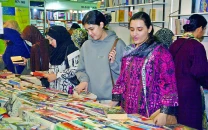
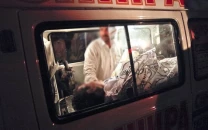

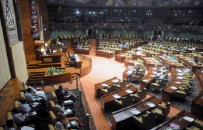
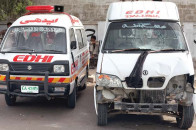












COMMENTS
Comments are moderated and generally will be posted if they are on-topic and not abusive.
For more information, please see our Comments FAQ